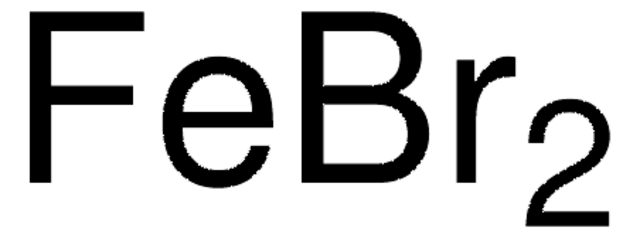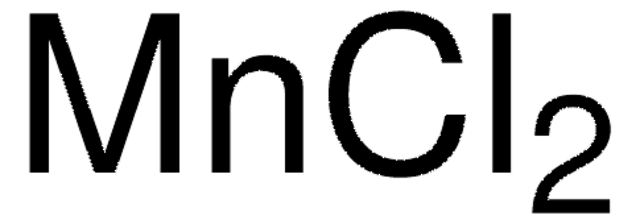450936
Iron(II) chloride
AnhydroBeads™, −10 mesh, 99.99% trace metals basis
Sinônimo(s):
Ferrous chloride, Iron dichloride
About This Item
Produtos recomendados
grau
for synthesis
synthesis grade
linha de produto
AnhydroBeads™
Ensaio
99.99% trace metals basis
Impurezas
≤150.0 ppm Trace Metal Analysis
tamanho de partícula
−10 mesh
pf
677 °C (lit.)
densidade
3.16 g/mL at 25 °C (lit.)
aplicação(ões)
battery manufacturing
cadeia de caracteres SMILES
Cl[Fe]Cl
InChI
1S/2ClH.Fe/h2*1H;/q;;+2/p-2
chave InChI
NMCUIPGRVMDVDB-UHFFFAOYSA-L
Procurando produtos similares? Visita Guia de comparação de produtos
Descrição geral
Aplicação
- A doping agent in the fabrication of mixed organic-inorganic perovskite for high-efficiency perovskite solar cells. The incorporation of iron(II) chloride improve the overall efficiency of the solar cell.
- A precursor for synthesizing various iron(II) coordination complexes. These complexes are significant due to their unique optical and electronic properties, which are essential for various applications, including solar energy conversion and catalysis.
- As a precursor in the synthesis of iron-nitrogen-carbon (Fe–N–C) catalysts for proton exchange membrane fuel cells.
Informações legais
acessório
Palavra indicadora
Danger
Frases de perigo
Declarações de precaução
Classificações de perigo
Acute Tox. 4 Oral - Eye Dam. 1
Código de classe de armazenamento
8B - Non-combustible corrosive hazardous materials
Classe de risco de água (WGK)
WGK 1
Ponto de fulgor (°F)
does not flash
Ponto de fulgor (°C)
does not flash
Equipamento de proteção individual
Eyeshields, Faceshields, Gloves, type P3 (EN 143) respirator cartridges
Escolha uma das versões mais recentes:
Já possui este produto?
Encontre a documentação dos produtos que você adquiriu recentemente na biblioteca de documentos.
Os clientes também visualizaram
Artigos
Plasmonic nanoparticles have unique optical properties that can be tailored to suit a variety of applications in the biotechnology1–8 and electronics9–16 industries.
Nossa equipe de cientistas tem experiência em todas as áreas de pesquisa, incluindo Life Sciences, ciência de materiais, síntese química, cromatografia, química analítica e muitas outras.
Entre em contato com a assistência técnica










